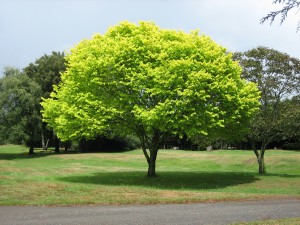 A Virginia subrogation attorney handles a range of issues, some more than others. Cases involving neighbors’ trees causing damage to vehicles or homes occur more frequently than one would think. It makes sense considering the geography of our state. Virginia is home to a variety of large deciduous and coniferous trees which are a marvel to view, but can cause real problems with both their branches and their root systems.
A Virginia subrogation attorney handles a range of issues, some more than others. Cases involving neighbors’ trees causing damage to vehicles or homes occur more frequently than one would think. It makes sense considering the geography of our state. Virginia is home to a variety of large deciduous and coniferous trees which are a marvel to view, but can cause real problems with both their branches and their root systems.
The seminal case in Virginia, Fancher v. Fagella, 650 S.E.2d 519 (Va., 2007), clearly settles the question of whether the owner of the encroaching tree is responsible for the damage caused to his neighbor’s property. The parties in the suit were neighbors, and still could be, in adjoining town homes in the County of Fairfax. Joseph Fagella had a large sweet gum tree growing on his property that Richard Fancher alleged was damaging his property and that the tree constituted a noxious nuisance. Specifically, Fancher alleged that the tree was damaging his retaining wall, the rear foundation of his house and rendering the steps to his house ineffectual due to root encroachment. Fancher attempted self-help by attempting repair and cutting back branches and roots, but they always grew back. He prayed for an injunction requiring the removal of the tree and an award of damages in compensation for repairs made to the wall and the foundation. At the hearing expert testimony was presented and it was established that the trunk of the tree was located on Fagella’s property. The arborist testifying stated that the sweet gum is native to the area, that it grows to “incredible heights of 120 to 140 feet” at maturity and would eventually reach a trunk diameter of 4 to 6 feet. The arborist testified that the tree was deciduous, dropped “spiky gumballs,” had a “heavy pollen load,” an “extremely invasive root system” and a “high demand for water.” His opinion was that the tree was presently “only at mid-maturity,” that it would continue to grow, and that “[n]o amount of concrete would hold the root system back.” The root system was, in his opinion, the cause of the damage to the retaining wall and the pavers and “in the same line as those cracks to the wall and the foundation.” The arborist stated that the tree was “noxious” because of its location and that the only way to stop the continuing damage being done by the root system was to remove the tree entirely, because the roots, if cut, would grow back. After the presentation of evidence was concluded Fagella made a motion to strike the prayer for injuctive relief, based upon the Virginia Supreme Court case Smith v. Holt, and the motion was sustained. Fancher filed an interlocutory appeal to the Virginia Supreme Court, certiorari was granted.
The Virginia Supreme Court had to settle which of the two developing legal doctrines Virginia would adhere to when presiding over cases dealing with trees and neighboring properties: (1) the Massachusetts Rule or the (2) Virginia Rule. The Massachusetts Rule limits the victim to self-help and provides no remedy at law when plants are encroaching upon a neighbor’s property. The Virginia Rule provides that encroaching roots and plants can be classified as a “noxious nuisance” when they cause actual harm or pose actual danger to persons or property. In other words, the offending plants cannot merely drop flowers, cast shade or cause other minor annoyances. Ultimately, the Virginia Supreme Court adopted the “Virginia Rule” and sustained the injunction against Fagella.
